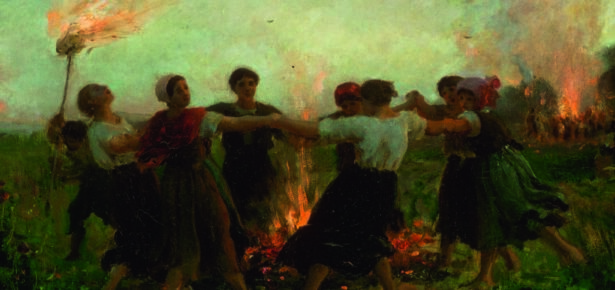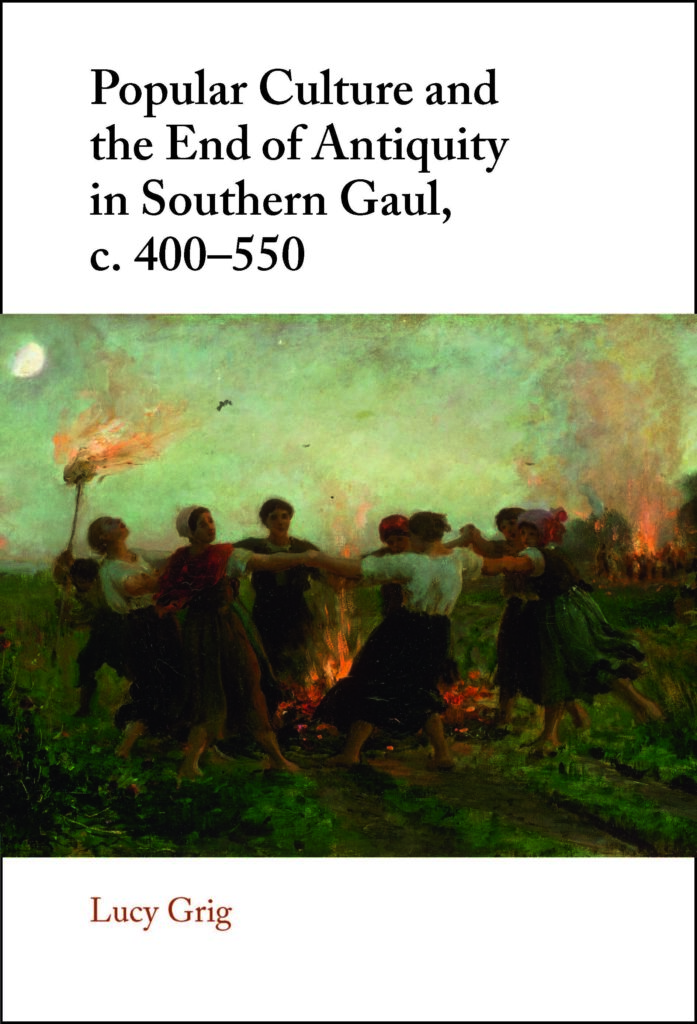
As I write this, England has had the wettest twelve months since 1871 (although it has seemingly been drier in Scotland, where I live – even if it does not necessarily feel that way). Weather stories, including those dealing with extreme weather, are increasingly a feature of our news cycles, as part of the ever more visible processes of climate change we face today. Concern about the weather is of course not a new phenomenon, and societies over time have sought out various different technologies to ameliorate its harmful effects. A couple of years ago I received a little jolt when one of my children brought home a series of short poems for the traditional Scots Week activities in their Edinburgh primary school as I realised that one of them was clearly an anti-hail charm: ‘Rainy, rainy rattle-stanes,/ Dinna rain on me;/ But rain on Johnnie Groat’s House,/ Far owre the sea.’
This activity occurred as I was researching what would become the fifth chapter of my book, in this case exploring traces of ‘lived religion’ – religion as embedded in daily life and its rituals – in the countryside of late antique Provence. I was interested in how individuals and communities can be seen to have constructed their own ‘lived religion’, both shaping and shaped by the natural environment and secular and sacred power structures alike. I had started looking at responses to hail – a particularly feared, destructive phenomenon in the pre-modern world. Remedies targeting hail constitute an important sub-category of protective measures found in a broadly agricultural context across the ancient Mediterranean. (They were at times somewhat hair-raising – one practice mentioned by the late Roman agronomist Palladius involved crucifying an owl). Rituals were performed and spells or prayers were recited, with various types of inscribed objects (charms, amulets, phylacteries – a number of terms are used) placed in situ). These objects and rituals sought to banish the demonic force/s seen as responsible for hail. An anecdote from the Life of the domineering bishop Caesarius of Arles (d. 542) recounts how an estate in the hill range of the Alpilles was plagued each year by powerful hailstorms, which destroyed the crop, so when the forgetful bishop left his episcopal staff behind the estate owner had it fashioned into a cross and hung up, which successfully banished the hail henceforward. This incident represented just one in a long line of adaptations of remedies against hail – such as the earlier (second-century CE) engraved bronze tablets also from southern France, that invoked the demons Oamoutha and Abraxas. Our late antique example demonstrates the effective appropriation of both the power of the bishop (as made material in his staff) and that of the cross.
Rituals against hail and other forms of harmful weather were carried out by country dwellers across the social spectrum – but the stakes were higher for those of more limited resources: that is, the danger posed by hail was proportionally much greater for tenants or for small landowners, of whom there were many. Indeed, church council records discussed in my book provide evidence for the ownership and stewardship of small parcels of vineyard by the non-elite, including former slaves. At the same time, ritual practitioners whose activities fell foul of the legal and clerical authorities were themselves most likely to be of sub-elite or non-elite status. Caesarius of Arles prescribed the specifically lower-class punishment of beating for those even consulting ‘sorcerers, diviners, or enchanters’ in one sermon, while the Council of Narbonne in 589 prescribed extreme punishments for ‘diviners’ when specified as ‘freed people, male or female slaves.’ We can see that individuals and communities across a deeply unequal society responded to the threat of extreme weather and its effects with a range of related ritual and material practices. The risks and frameworks within which they acted, however, were far from identical – just as the effects of contemporary climate change are highly unequal today.
I shall finish with one final weather anecdote, that took place further north of Provence, in the Auvergne: a group of ‘rustics’ (so regularly the foil to our episcopal authors, and in many ways the heroes of my book), regularly paid cult to a sacred lake, with the result (at least according to the author Gregory of Tours), that each year thunder storms ensued. When through the efforts of the local bishop this cult was transferred to the relics of Hilary of Poitiers the storms ceased. In his sermon to the ‘rustics’ the bishop proclaimed ‘’There is (to be) no religious piety to a lake’. The influential theorist Talal Asad has used this passage to illustrate a key point: that it is power that constructs religion. Across multiple instances in my book we see preachers and their audiences come into conflict over what was, and was not correct religion, or correct behaviour. We also see the persistence of what I call popular culture, in the behaviour of the non-elite, who we can glimpse using the tools at their disposal, to navigate the lived and natural environments around them, even when hostile.

Latest Comments
Have your say!